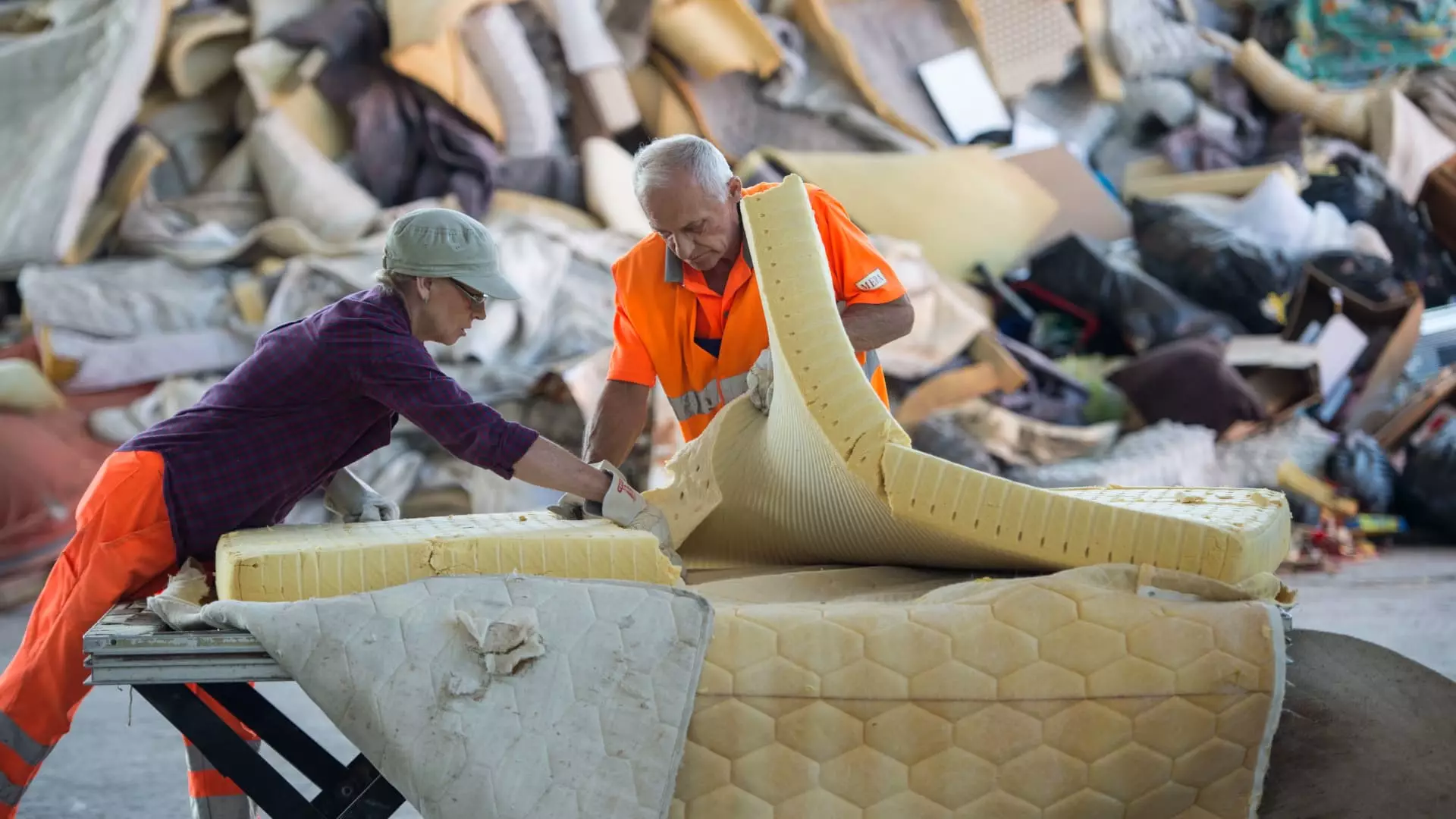As the world becomes increasingly aware of the environmental impact of consumer products, mattress recycling is emerging as a critical part of sustainable waste management strategies in several states across the U.S. This growing initiative stands in stark contrast to the traditional methods of mattress disposal, which often result in these bulky items ending up in landfills. The introduction of state-mandated fees for new mattress purchases is not just a taxation issue; it represents a paradigm shift towards a more sustainable, circular economy that values resource conservation.
Currently, four states—California, Connecticut, Oregon, and Rhode Island—have implemented a flat fee that consumers must pay when purchasing mattresses or box springs. This fee, ranging from $16 to $23, funds state-level recycling programs focused on diverting up to 20 million discarded mattresses annually from landfills. The Mattress Recycling Council (MRC) emphasizes that over 75% of mattress materials, including wood, steel, foam, and fibers, can be recycled. Instead of contributing to waste, these materials can be processed and integrated into new products, thereby reducing the need for new raw materials.
California, for example, has adjusted its fee to $16 per unit starting 2025, while Connecticut increased its fee to align with California’s. Oregon recently introduced a fee of $22.50 aimed at enhancing the state’s recycling infrastructure. These fees might seem like an inconvenience at the point of purchase, but they serve a vital purpose. They help foster an efficient recycling system that could limit illegal dumping and make recycling more accessible to the general public.
Aside from the financial aspect, one of the most significant barriers to mattress recycling is the lack of accessible recycling facilities. According to the MRC, only 58 companies across the United States currently recycle old mattresses, highlighting the pressing need for a nationwide expansion of such services. In states that do not have mandated recycling programs, consumers are often faced with exorbitant fees for drop-off or pickup services, sometimes paying as much as $95 for the latter in urban areas like New York City. This situation deters many from recycling their old mattresses, leading to further environmental degradation.
The contrast is stark when comparing states with active recycling programs to those without them. In states where no consumer fees exist, the burden of mattress disposal often falls on taxpayers and municipalities, exacerbating waste management challenges. The absence of developer accountability encourages unsustainable consumer behavior, compromising both the environment and public resources.
The trend towards mattress recycling in these states is closely tied to the Extended Producer Responsibility (EPR) model. EPR laws compel manufacturers to assume responsibility for the lifecycle of their products, including post-consumer waste. This concept not only encourages better product design but also promotes the recycling of materials after they have served their purpose. As noted by Reid Lifset, an advocate for industrial ecology at Yale University, EPR schemes can create new funding avenues for recycling initiatives, enabling a more sustainable future.
In Oregon, for instance, a substantial portion of the collected fees—more than half—will directly support operational costs of the recycling program, effectively creating a sustainable recycling ecosystem while also generating new jobs within the recycling sector. Similar plans are being pursued in other states, indicating a significant shift towards a more responsible approach to consumer goods.
As the implementations of these recycling programs gain traction, there is a hopeful outlook for a broader adoption across more states, including efforts underway in Massachusetts, Maryland, New York, and Virginia. Increased awareness and regulatory pressure will be key to motivating states to adopt similar programs. The future of mattress recycling not only holds benefits for the environment but also for communities facing the impact of waste management and illegal dumping issues.
The movement towards mattress recycling exemplifies an essential aspect of public policy—addressing consumer habits while fostering eco-friendliness. A partnership between governments, manufacturers, and consumers can lay the groundwork for a circular economy, where materials are reused and recycled, ultimately benefiting society at large. As the conversation around sustainable waste management continues, it is vital that consumers, lawmakers, and industry stakeholders collaborate to ensure the longevity and success of these initiatives.

